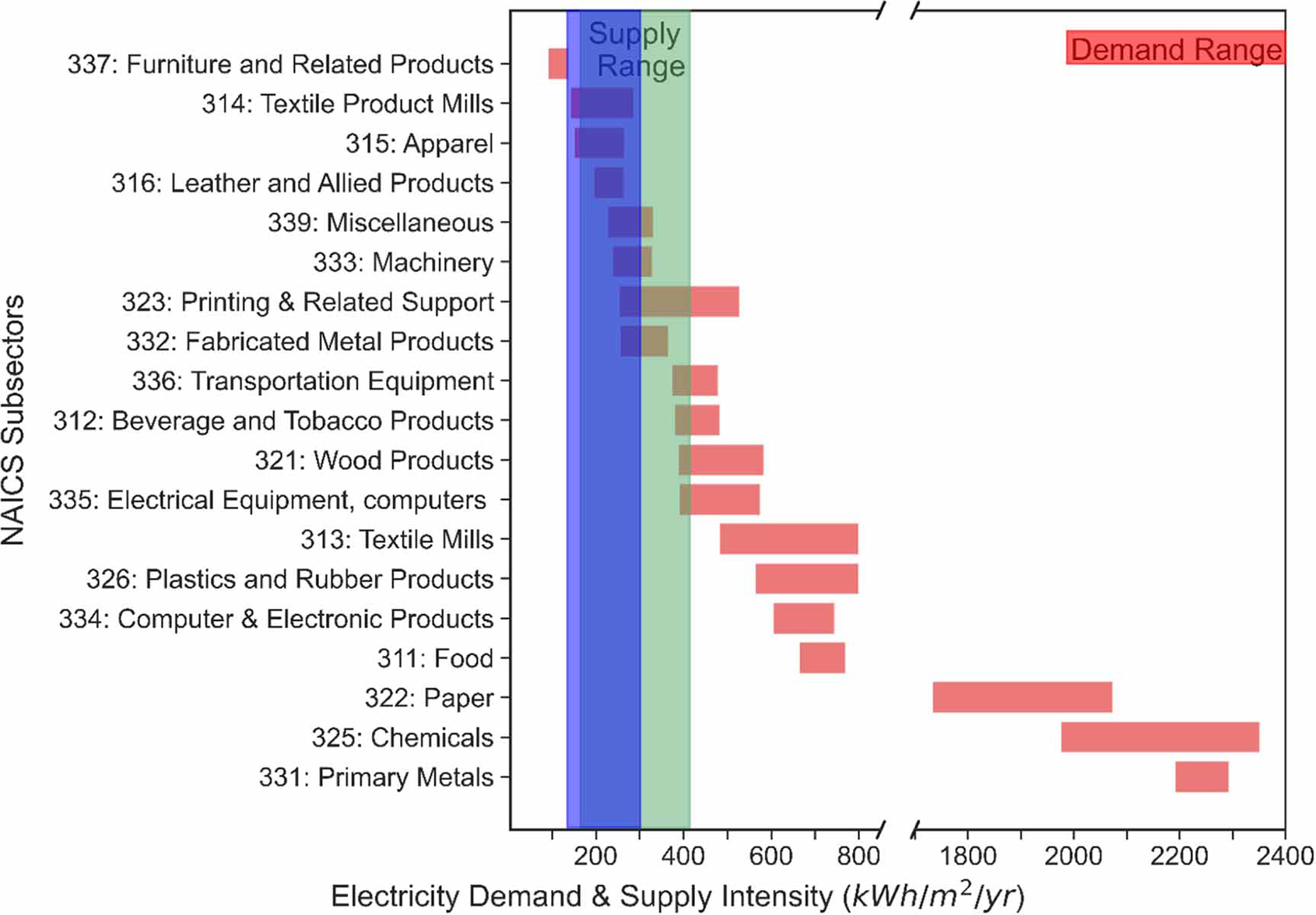Rooftop Solar Could Power Up to 35% of Manufacturing in the U.S.
A recent study investigated the technical feasibility of using rooftop solar PV to cover the net annual electricity needs of industry across all U.S. states and manufacturing sectors. Modeled electricity supply intensity for solar PV arrays is compared with the electricity demand per unit of floorspace for average manufacturing buildings derived from the U.S. Department of Energy Manufacturing Energy Consumption Survey.
Manufacturing buildings typically have large, flat rooftops that are ideal for solar photovoltaic (PV) arrays, yet less than 1% of industrial electricity demand in the U.S. is currently powered by on-site solar installations.
Results show that, depending on geographical location, rooftop solar PV can completely fulfill the electricity requirements of 5%–35% of manufacturing sectors considered on a net annual basis (assuming net metering). Furniture, textiles, and apparel manufacturing can be powered through on-site means in nearly every location, representing 2% of U.S. manufacturing electricity use and 6% of floorspace. Considering seasonal potential during summer months expands the list of feasible sites, particularly in the U.S. Southwest.

Graph: Manufacturing electricity demand intensity and rooftop solar PVs supply intensity ranges. Electrical demand intensity of manufacturing subsectors (including standard error for each sector—red) and high efficiency (22%) roof-mounted solar PV supply (green) and low efficiency (16%) roof-mounted solar PV supply (purple) intensity in 50 U.S. state capitals and selected additional cities, both in kWh m−2 yr−1.
Compared to off-site sourcing of renewable energy, pursuing on-site PV installations can also enable manufacturers to maintain limited operations during periods of grid disruption, especially when coupled with on-site energy storage. Overall, the results indicate a substantial physical opportunity for industrial firms to expand rooftop solar PV from currently low levels to help meet decarbonization goals.
Rooftop solar combined with energy storage is an approach to on-site power that can make facilities energy self-sufficient, keeping the power on and operations going even during grid power outages.


